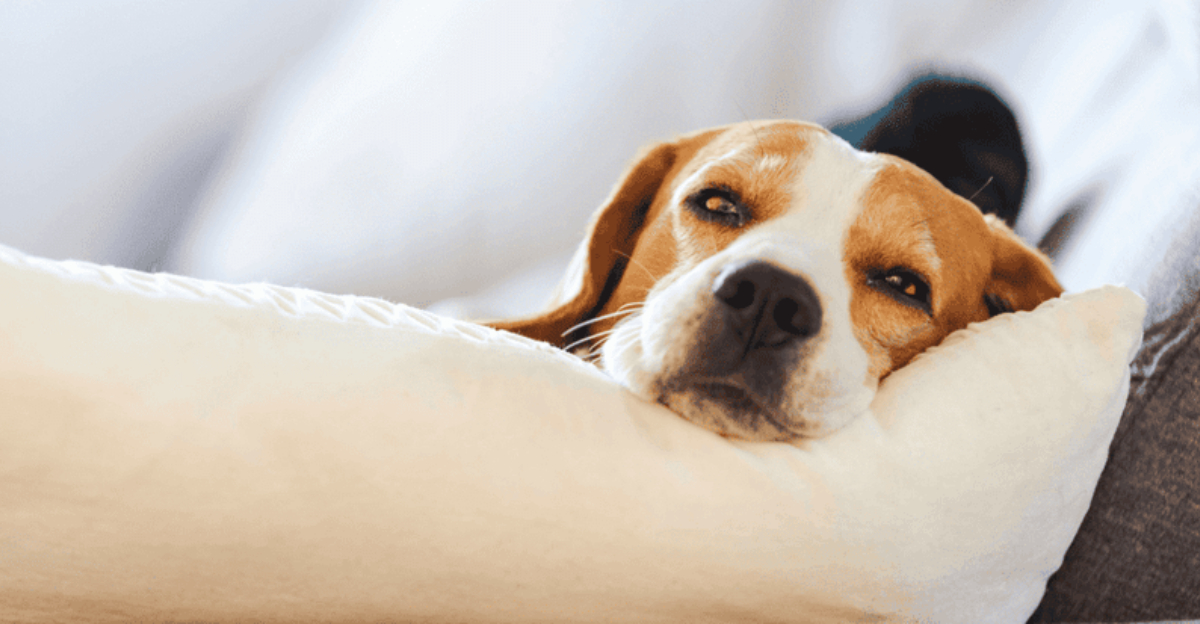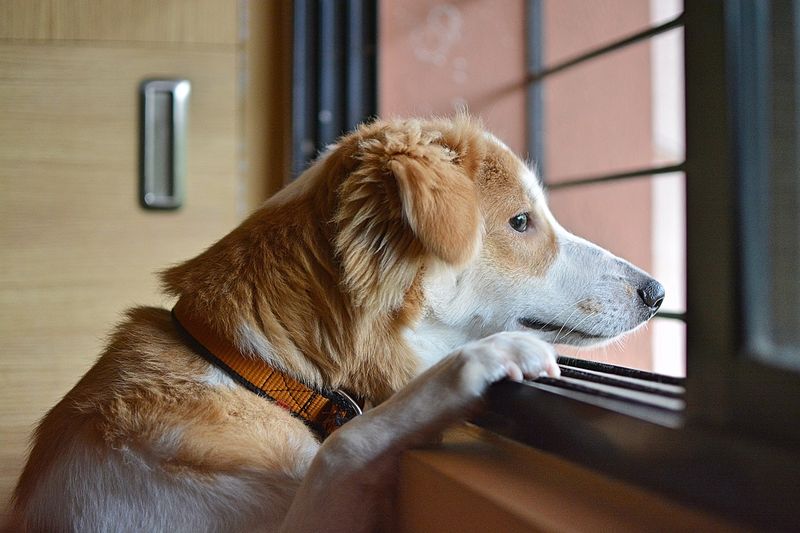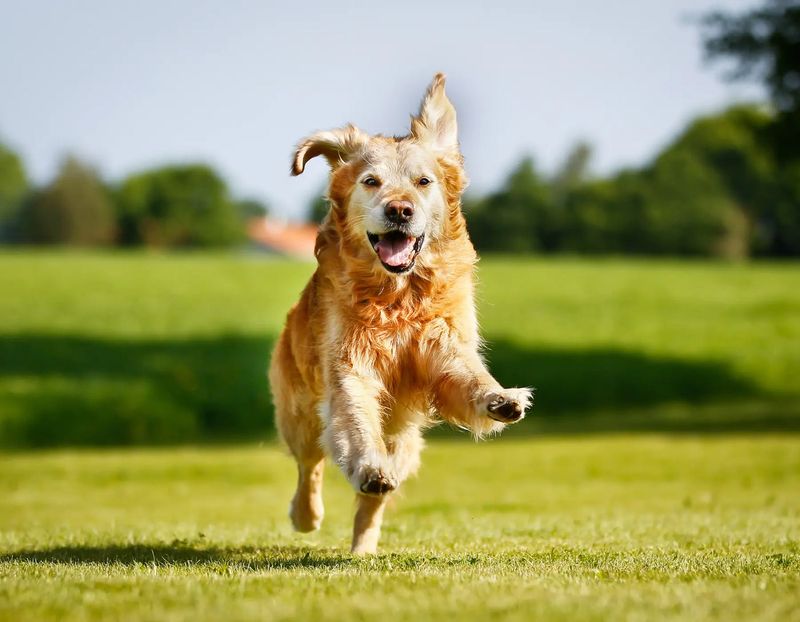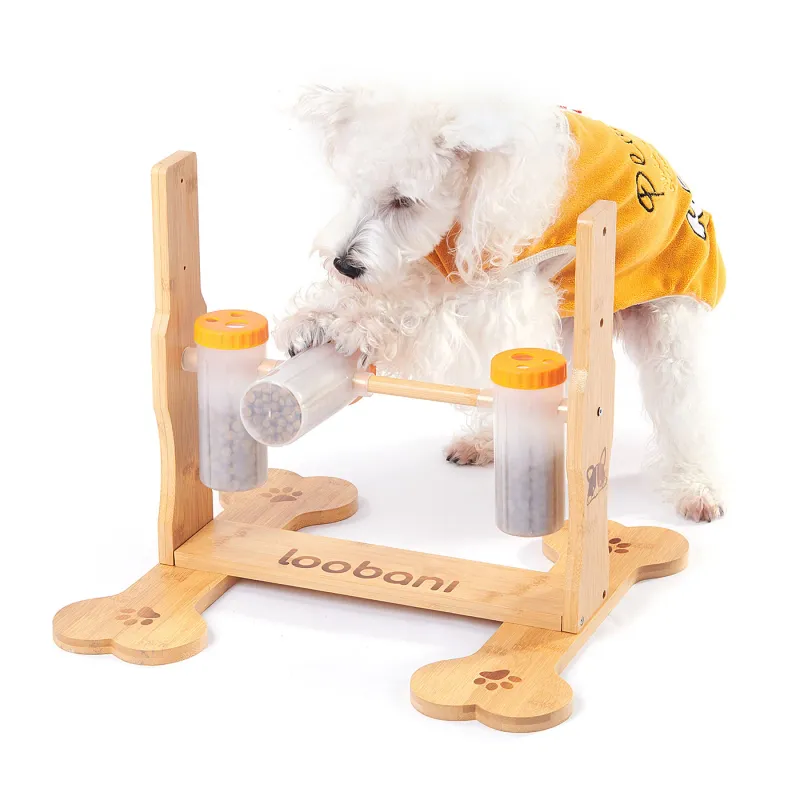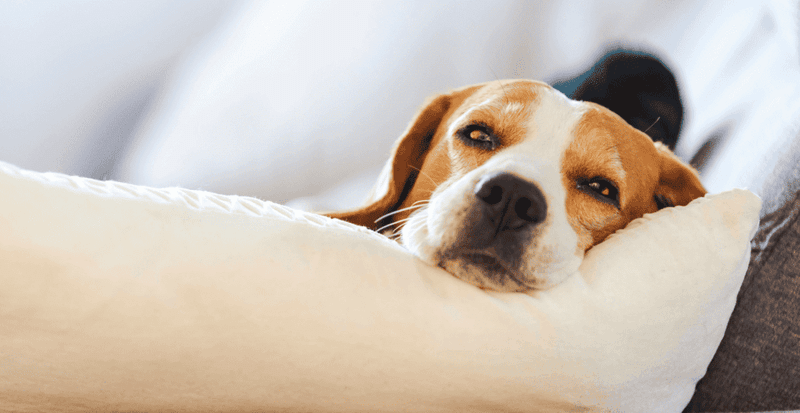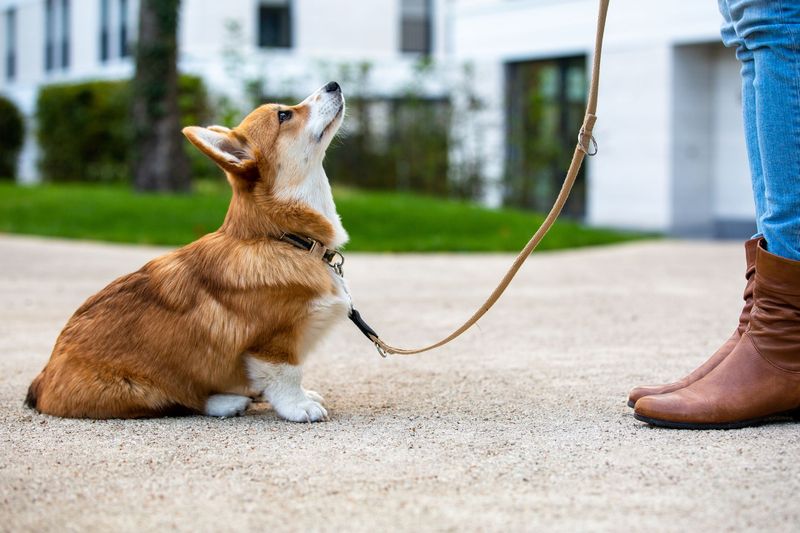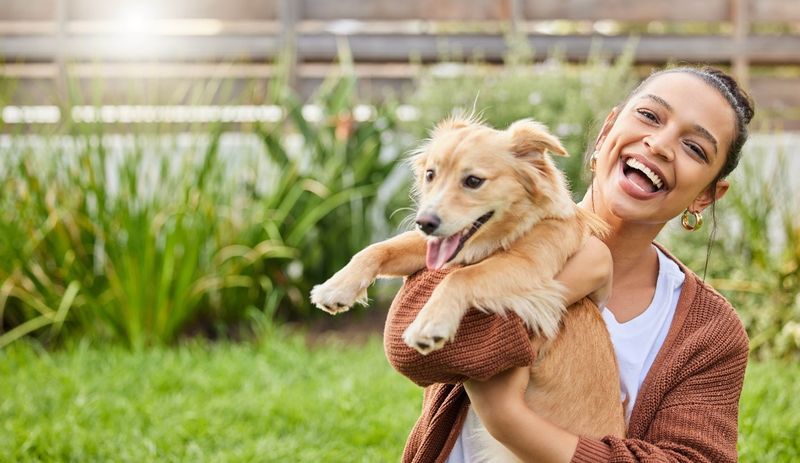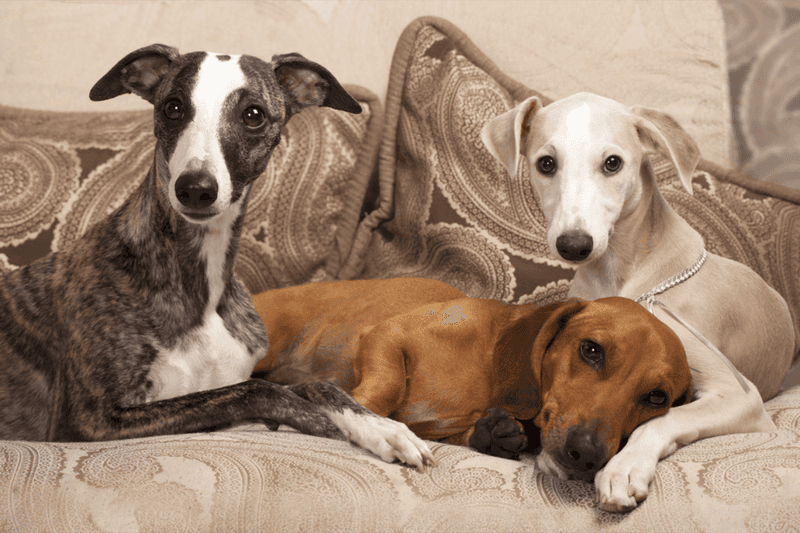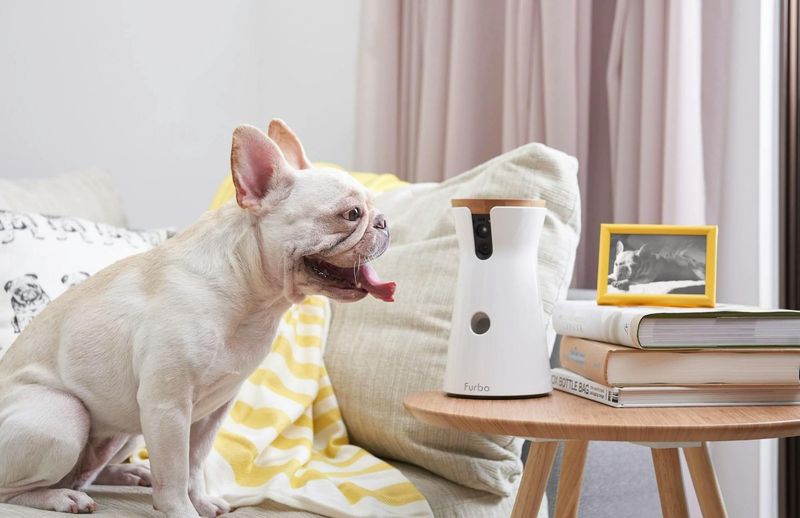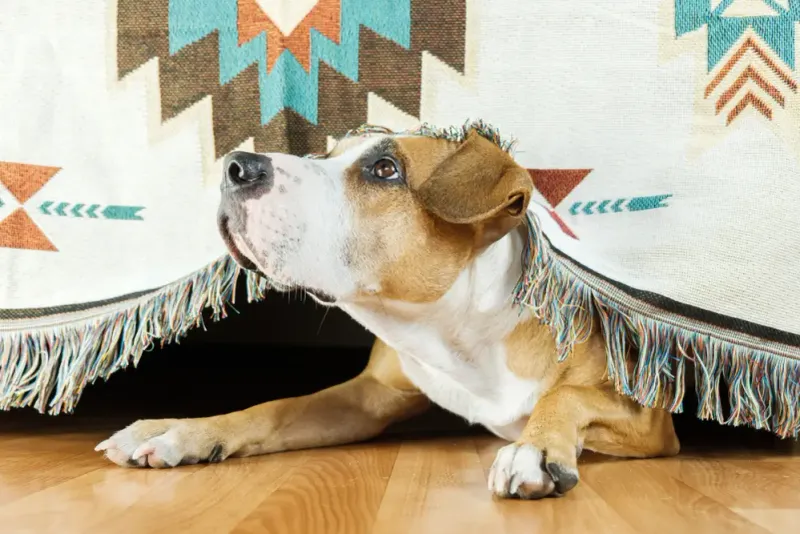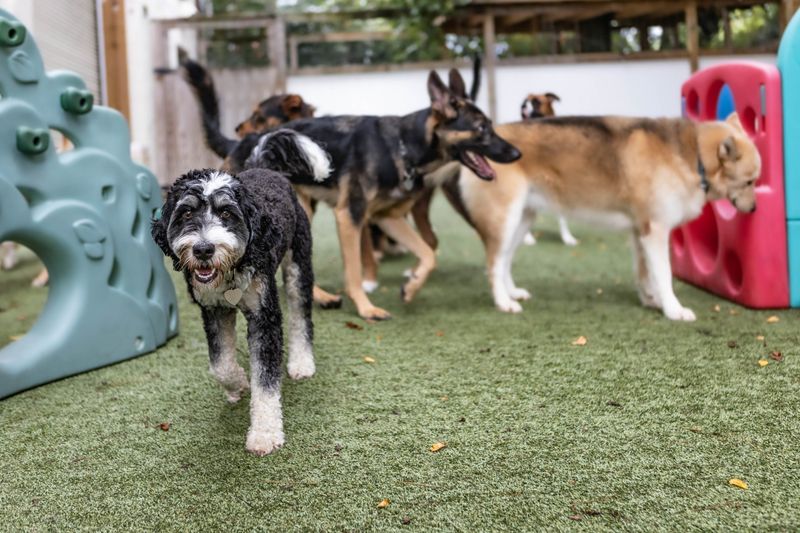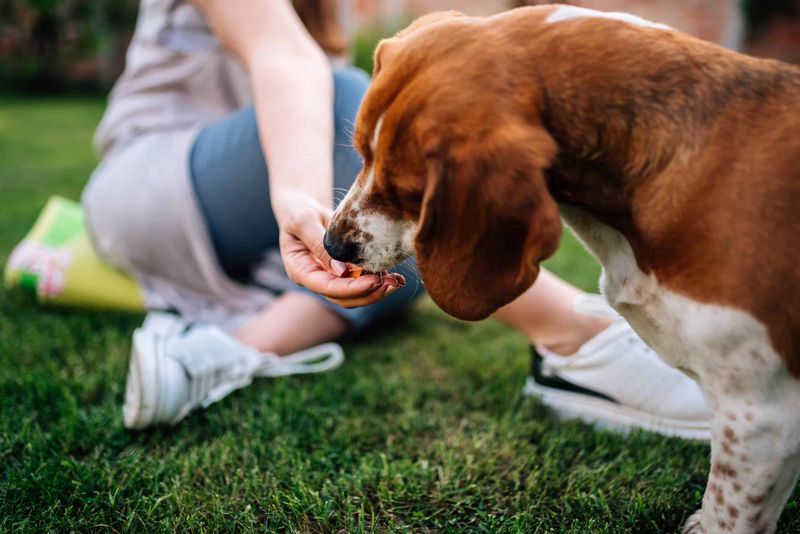Separation anxiety in dogs can be distressing for both pets and their owners. It’s characterized by behavioral issues like barking, whining, and destructive chewing when the owner leaves. Addressing this problem requires understanding, patience, and strategic interventions. Here are 13 effective tips to help ease your dog’s separation anxiety, ensuring a happier, more relaxed pet.
Gradual Departures
With patience and reassurance, practice leaving your home in small, gradual steps. Begin with just a few minutes and slowly extend the time away. This training helps your pet understand that departures aren’t permanent.
Consistency is vital, and the focus should be on nonchalant exits and returns. Avoid dramatic goodbyes or enthusiastic welcomes. Over time, your dog will become more accustomed to your absence, easing anxiety and promoting independence. Remember, every dog responds differently, so tailor the process to your dog’s comfort level and progress at their pace.
Provide Plenty of Exercise
A well-exercised dog is often a more relaxed dog. Start the day with a brisk morning run or a playful session in the park. Physical activity helps expend excess energy and decrease anxiety.
Regular exercise not only benefits physical health but also boosts serotonin levels, contributing to a happier disposition. Incorporating mental stimulation, like interactive toys or puzzles, further enhances this effect. Tailor activities to your dog’s age, breed, and energy level, ensuring they are both enjoyable and beneficial. An active lifestyle can significantly ease separation anxiety.
Interactive Toys and Puzzles
Imagine your dog engrossed in a complex puzzle toy, eagerly trying to retrieve hidden treats. These interactive toys offer mental stimulation, keeping boredom at bay.
By engaging your dog’s mind, these puzzles shift focus away from your absence. They provide a productive outlet for anxiety, encouraging problem-solving and rewarding persistence. The variety in toys keeps things fresh and exciting, catering to your dog’s curiosity and intelligence. Incorporate these activities into your daily routine to foster a more relaxed and content pet.
Create a Safe Space
Imagine your dog’s favorite corner of the house, filled with soft blankets, beloved toys, and a calm ambiance. This safe space acts as a sanctuary, offering familiarity and comfort. By designating a dedicated area, dogs can retreat to their own personal haven, reducing anxiety levels.
This setup helps them cope with the absence of their owner. Including calming items like lavender-scented toys or a piece of clothing with the owner’s scent can make a significant difference. The key is consistency and patience, ensuring the space remains a positive, stress-free zone for your canine companion.
Use Calming Music
The soothing tones of calming music can transform your dog’s environment. Playing soft, rhythmic tunes creates a tranquil atmosphere, helping to ease anxiety during your absence.
Music designed specifically for dogs can lower stress levels and promote relaxation. This auditory distraction serves as a comforting presence, making the environment feel less empty. Experiment with different genres to find what resonates best with your pet. Such musical interludes can become a reliable part of your dog’s routine, offering solace and peace.
Desensitization Training
Desensitization training is a powerful tool in combating separation anxiety. By gradually exposing your dog to departure cues, like picking up keys or putting on shoes, you can diminish their anxiety response.
The aim is to break the association between these actions and your absence. Start slow, and reward calm behavior with treats and praise. Over time, your dog will learn that these cues don’t always lead to separation, reducing stress. This training requires patience and consistency but can lead to lasting change.
Establish a Routine
Dogs thrive on routine. Establishing a structured daily schedule for feeding, walks, and playtime can bring a sense of security and predictability.
Knowing what to expect reduces anxiety, as your dog learns that their needs will be met consistently. Adhering to set times for meals and activities fosters a balanced lifestyle, promoting both physical and mental well-being. Adjust the routine to fit your lifestyle, ensuring it’s sustainable and beneficial for both you and your pet.
Provide a Companion
The company of another dog can alleviate feelings of loneliness and separation anxiety. Imagine two dogs joyfully playing together in a sunlit backyard, their companionship fostering a sense of security.
A fellow canine can offer emotional support and distraction, creating a dynamic and engaging environment. Introducing a companion should be done gradually, ensuring compatibility and comfort. This new friendship can become a pivotal part of easing separation anxiety, offering mutual benefits and shared comfort.
Use of Dog Cameras
Envision your dog curiously watching a camera with a two-way audio setup. Dog cameras allow you to monitor your pet and even communicate with them while you’re away.
This technology offers peace of mind for both you and your dog, providing a sense of connection in your absence. Seeing and hearing you can comfort your pet, reducing anxiety and boredom. It’s a modern solution that bridges the gap, offering reassurance and interaction.
Professional Training Assistance
Sometimes, enlisting the help of a professional dog trainer can make all the difference. At a dedicated training facility, experts focus on addressing specific anxiety behaviors.
These professionals offer tailored strategies and insights, working closely with you and your dog. Their expertise provides a deeper understanding of your pet’s needs, facilitating more effective training. Investing in professional guidance can lead to significant improvements, fostering a happier and more confident canine.
Consider Natural Remedies
Natural remedies, like herbal supplements and essential oils, offer alternative solutions for easing anxiety. Picture a collection of these remedies, each tailored to support your pet’s emotional well-being.
These options provide gentle support, without the side effects associated with some medications. Incorporating calming scents or dietary supplements can enhance your dog’s comfort during challenging times. However, always consult with a veterinarian to ensure safety and efficacy.
Try Doggy Daycare
Doggy daycare offers a social and stimulating environment for pets experiencing separation anxiety. Imagine a vibrant space where dogs play and interact under supervision.
This setting provides mental and physical stimulation, reducing feelings of loneliness and anxiety. The structured environment ensures safety and encourages positive social interactions, contributing to a happier disposition. Regular attendance can create a routine, fostering a sense of security and contentment.
Implement Positive Reinforcement
Positive reinforcement is a cornerstone of behavior modification. Envision your dog receiving a treat for calm behavior, with an owner showing approval and encouragement.
By rewarding desired actions, you reinforce those behaviors, gradually diminishing anxiety-driven responses. Consistency is key, as positive reinforcement builds trust and confidence. Tailor rewards to your dog’s preferences, ensuring they are both motivating and enjoyable. This approach fosters a more relaxed and self-assured pet, contributing to long-term well-being.
